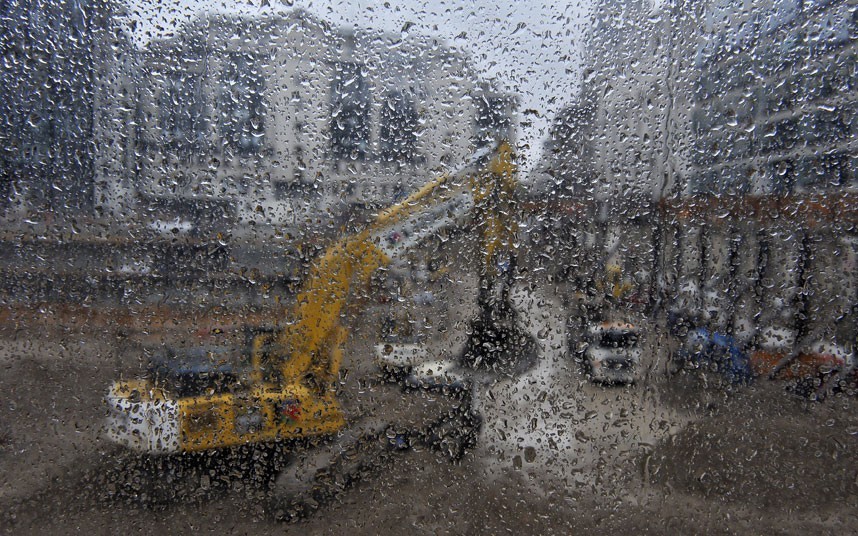What is Traffic Congestion?
Traffic Congestion in construction refers to the significant increase in vehicular traffic due to construction activities, leading to delays, increased travel times, and disruption for local communities. This can be caused by road closures, diversions, or the influx of construction vehicles and equipment. Project Owners and General Contractors are motivated to avoid traffic congenstion, as maintaining the flow of material to and from site is important to progress.
What does Traffic Congestion mean?
'Traffic Congestion' is as it reads, congested traffic, and means the negative impact this has on traffic flow around construction sites. There is careful planning and communication needed with local authorities and the public to minimize disruption and maintain accessibility.
Traffic Congestion Example
A typical example of traffic congestion in construction occurs during the expansion of a highway. Lanes are often reduced or diverted, leading to bottlenecks and significant delays during peak travel hours, impacting commuters and local businesses, and potentially other construction projects.

The History of Traffic Congestion
Traffic congestion related to construction has been a growing concern as urban areas expand and infrastructure ages. Ironically, heavy trucks and construction vehicles contribute to the decline of roads and bridges. The need for repairs and upgrades often conflicts with the existing traffic demands, prompting the development of traffic management as a critical field within urban planning and construction management. These day's some construction sites may even operate at night to avoid traffic affecting a critical concrete pour, for example.
Causes of Traffic Congestion
Traffic congestion related to construction can be caused by:
- Isolated Site: The site is not in an easily accessible location and there is limited infrastructure or access to the site.
- Lane closures: Reduction in available lanes to accommodate construction work.
- Road closures: Complete closure of roads for construction activities.
- Increased vehicle presence: Addition of construction vehicles and equipment on the roads.
- Altered traffic patterns: Changes in normal routes due to construction detours.
Likelihood of Traffic Congestion
The likelihood of traffic congestion is high in construction projects that involve major roadways or are located in densely populated urban areas. Proper planning and communication are essential to mitigate its impact.
Consequence / Impact of Traffic Congestion
The consequences of traffic congestion include increased travel time, higher transportation costs, elevated pollution levels, and potential negative impacts on local businesses and resident satisfaction. For construction projects, this can also lead to strained relations with the community and potential penalties if traffic management plans are not followed. Overall, a moderate to high impact rating.
Traffic Congestion Clauses in Construction Contracts
Traffic Congestion clauses in construction contracts are designed to manage the expectations and responsibilities related to traffic impacts:
- Traffic Management Plan Requirement: Mandate the creation and implementation of a traffic management plan.
- Community Consultation: Outline requirements for notifying and communicating with local communities and businesses about expected traffic changes.
- Penalties for Non-Compliance: Define penalties for failing to adhere to traffic management guidelines or causing undue congestion.
- Make Good: If a road or infrastructure is damaged, it may be the General Contractor's responsibility to make good / repair the damage.
Mitigations and Treatments for Traffic Congestion Risk
Effective mitigation and treatment strategies for traffic congestion include:
- Develop Comprehensive Traffic Management Plans: Coordinate with local traffic authorities to design effective traffic rerouting and management strategies.
- Use of Off-Peak Hours: Schedule construction work during off-peak hours to minimize impact on traffic.
- Public Communication Campaigns: Keep the public informed about construction schedules and expected traffic issues through regular updates.
- Alternative Transportation Promotion: Encourage the use of public transport, carpooling, or alternative routes during construction phases.
- Temporary Roads or Access: Investigate constructing a new temporary road or access way, to take the brunt of the construction work's traffic and reduce the impact on main traffic arteries.
Risk Management and Reporting of Traffic Congestion Risk
As we've seen above, there are alot of considerations when it comes to Risk Management. Implementing Risk Management and Reporting controls will make managing this risk easy, and ensure success of your Capital Project.
- Risk Management Plan: Download a free Risk Management Plan Template and put a Risk Management process in place.
- Risk Register: Download a manual Risk Register Template or use an automated Risk Register solution to track all risks, causes, consquences and mitigations.
- Reporting: Create automated Risk Reports, Project Status Reports or Dashboards for communicating with stakeholders. If you need a free Report Template, you can find some examples here.

Why take the 'Risk'? 😂Start today with Mastt's fast, easy Risk Management solution
Replace spreadsheet risk registers instantly and unlock opportunities to complete Capital Projects earlier with reduced costs using Mastt.























